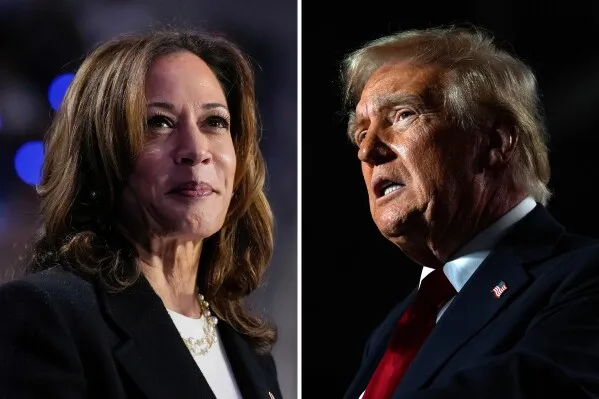An Unpredictable Race: Harris vs. Trump in a Historic Battle for the White House
By Arsenii Glazunov | Published on November 4, 2024

The upcoming U.S. Presidential election has been anything but predictable, generating headlines as Trump re-emerges as a strong candidate despite multiple legal challenges, while President Joe Biden steps aside, throwing his support behind Vice President Kamala Harris.
It has been a tricky cycle for pollsters too. For the past eight years, they have tried, mostly unsuccessfully, to capture the “ Trump phenomenon ” among U.S. voters, and even now, on the eve of the election, there's no certainty that they've nailed it.
To be frank, it is challenging to think of a more unconventional Republican candidate in the party's history than Trump. Still, in the third election in a row, Democrats have not yet found a reliable winning combination for converting Trump’s supporters or securing a clear victory.
Despite the limited time, Harris has successfully highlighted a stark contrast between herself and Trump. Both candidates, on nearly every major issue, economic, social, and foreign policy, differ. Harris’s economic plan promises wealth redistribution, and lower living costs for middle-class families while Trump focuses on deregulation, tax cuts and higher tariffs on selected industries. Harris emphasises civil rights, women’s reproductive rights, and social justice, in contrast to Trump’s anti-woke, pro-life social agenda. In terms of foreign policy, Harris claims to restore and strengthen global alliances, particularly NATO, and foster diplomacy, whereas Trump’s approach is more isolationist, emphasising trade protectionism and military strength over extensive foreign engagement.
These policy differences reflect the deep divide within American society. As outsiders looking in, the best way to understand the shifting dynamics has often been through polls.
In two of the last presidential elections, U.S. pollsters have been very bullish in their support for a Democratic nominee—only to then be delivered a scarring blow by Trump. For instance, in 2016, many aggregators, including The New York Times and the Princeton Election Consortium , gave Hillary Clinton a 90% chance of winning. We all remember how that turned out. Four years later, polling error margins were the highest in four decades.
In this election cycle, polling methodologies appear to have accounted for previously overlooked factors driving Trump’s support, such as the reluctance of his supporters to openly share their voting intentions.
If we zoom into the polls, most show a tight race. Silver Bulletin , for example, gives Harris a slight lead in the national vote, polling her at 48.5%—0.7 basis points ahead of Trump. However, this is a decline from a nearly 3-point lead a month ago. Other major polls similarly show a razor-thin advantage for Harris but also note a steady erosion of her lead.
Interestingly, betting markets favour Trump more substantially. Polymarket , for instance, gives Trump a nearly 58% chance of winning, compared to 42% for Harris.
While this may seem very grim for Harris, there are reasons for Democrats to hope this polling cycle could favour Harris.
Firstly, many pollsters have emphasised that they’ve accounted for all factors that previously led them to underestimate Trump, even to the point of underestimating Democrats in the 2022 midterms. Could this focus on finally ‘figuring Trump out’ lead to his overperformance at the polls?
Another factor is that, believe it or not, there are still undecided voters in this election. On Harris’s side, some of these voters—moderate Republicans, including former Nikki Haley supporters—may feel alienated by Trump's aggressive rhetoric, particularly on women’s rights. There are also traditional Democrats disillusioned by the Biden administration’s position on the Israel-Palestine conflict and the unwavering support for Israel’s military efforts. While these groups may not publicly endorse Harris in polls, they are likely to vote for her to prevent a Trump victory.
Finally, for its whole duration, Trump’s campaign has targeted demographics that historically have lower voter turnout for the Republican party and in presidential elections more broadly, whereas Harris has focused on demographics that tend to vote consistently. And it might be the case again in this election that many young men who Trump is counting on are just not going to show up, while women, a group Harris’s campaign has prioritised with messaging around civil rights, will and in even greater numbers than expected. This turnout discrepancy may, again, play in Harris’s favour.
Americans face a choice between two sharply contrasting visions for the country’s future. Heading into Election Day, predictions remain risky and a wise choice would, perhaps, be to withhold any hunch one might have. November 5 has the potential to be historic. It could mark the first time a woman of African-American and South Asian heritage wins.